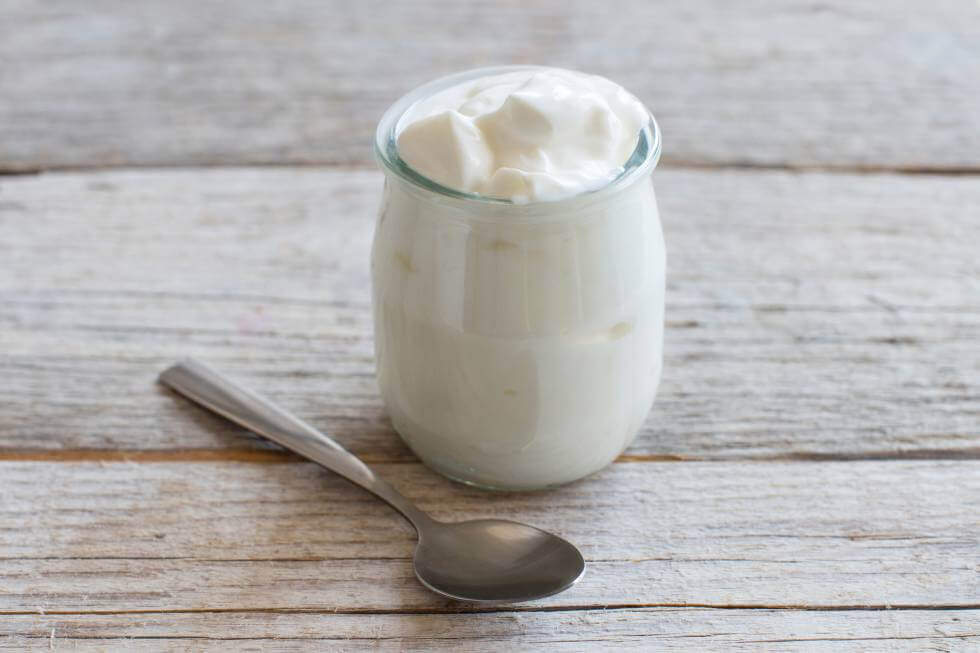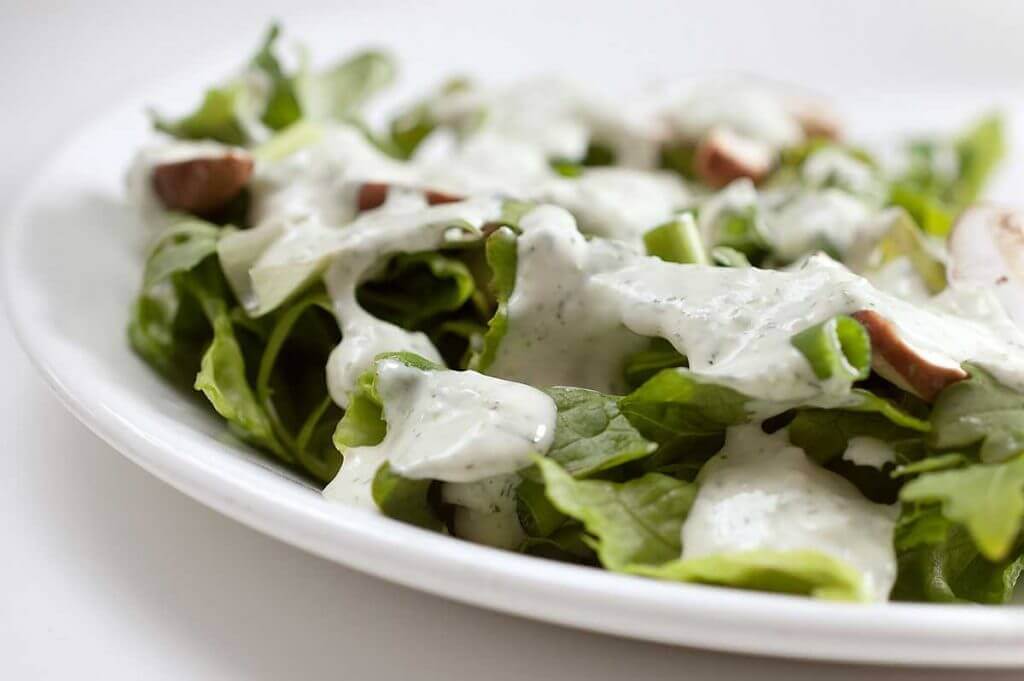The Yogurt Diet: A Healthy Way to Lose Weight


Reviewed and approved by the pedagogue in physical education and nutritionist Elisa Morales Lupayante
The yogurt diet is a balanced meal plan that’s based on much more than simply eating this dairy product. While there are some “miracle” diets with the same name, today we want to discuss a diet that will give you excellent results without compromising your health.
Yogurt is a nutrient-rich food that has benefits for many bodily functions. In addition to providing calcium for your bones, yogurt contains probiotics, or “live cultures,” that replenish the natural microbes in your intestines for better digestive health.
Yogurt is also a very versatile ingredient that can be added to the diet in many different ways. While it’s best to consume plain yogurt, it can also be used to replace certain salad dressings or sauces with main dishes.
The Benefits of the Yogurt Diet

There are lots of good reasons to choose this diet if you’re looking to lose weight more easily. First, it’s a very safe diet with lots of variety thanks to the different ingredients that are combined to meet all of your nutritional requirements.
At the same time, it decreases the number of calories your ingest per day. However, it doesn’t become hypocaloric or extreme.
Because yogurt has a prolonged satisfying effect, it reduces those food cravings and helps control your snacking.
Yogurt is an important source of B vitamins, calcium, magnesium, and essential amino acids that protect many of your vital functions. They can help regulate your nervous system, care for your bones, and protect the health of your muscles.
Among other things, the lactic acid found in yogurt maintains a healthy intestinal pH and facilitates the growth of “good” bacteria that strengthen your immune system. That’s why this diet is perfect for giving your defenses a boost or treating certain infections.
Do not miss: 7 Ways to Strengthen your Immune System
The Characteristics of the Yogurt Diet

The yogurt diet should be a balanced meal plan that includes several servings of this dairy product. Because you should avoid things in excess, however, we only recommend following this diet for five to seven days.
During this time, choose low-calorie ingredients that meet your body’s nutritional needs. Be sure to exclude all sources of sugars, simple carbohydrates, and saturated fats.
Foods that are permitted
- Vegetables and fresh fruits
- Lean meats and fish
- Whole grains and legumes
- Nuts and seeds
- Low-fat cheeses
Forbidden foods
- Red meat
- Sausage meats
- Bread
- Pastries
- Junk food
- Fried foods and packaged snacks
- Industrial drinks (soft drinks, juices, flavored waters, teas, etc)
- Industrial foods (snacks, sweets, etc)
Other considerations
- Eat five meals a day: Include three main meals and two snacks.
- Drink plenty of water during the day: Between six and eight glasses.
- Avoid anything that’s fried or breaded: Instead, choose food that has been baked, steamed, or boiled.
- Choose plain, fat-free yogurt with no added sugar or flavoring.
Recommended Menus for the Yogurt Diet

The menus that we suggest below for the yogurt diet are simple examples of how this plan should be followed. However, everyone is free to vary the main meals with other healthy foods they prefer.
Breakfast options
- A cup of plain yogurt, toast with turkey deli meat, and your choice of fruit.
- Two slices of bread with light jam, half a cup of plain yogurt, and one apple.
- A cup of herbal tea, two slices whole-grain toast with avocado, and plain yogurt.
Mid-morning snack
- Half a cup of plain yogurt with handful of nuts (about 20 or 30 grams).
- Fruit parfait with yogurt on top.
- Smoothie made with plain yogurt and fruit.
Read this article: 5 Energizing Smoothies with Avocado
Lunch options
- A bowl of green salad with yogurt dressing and diced chicken breast.
- Chicken fillet served with a yogurt salad made of cucumber and celery.
- Whole grain pasta dish with yogurt sauce and crab cakes.
Afternoon snack
- A cup of low-fat yogurt and two whole-grain crackers.
- Half a bowl of strawberries with plain yogurt.
- Plain yogurt with chia seeds.
Dinner options
- One serving of baked fish, steamed vegetables, and a slice of whole grain bread with yogurt.
- A French omelet with three slices of turkey and two slices of pineapple, with yogurt on the side.
- Scrambled eggs with mushrooms and prawns, and a fruit bowl with yogurt.
Are you trying to lose weight but don’t know how to start? Try the yogurt diet. As you can see, there are easy options that won’t require you to go hungry. As soon as you complete the diet, however, continue to make healthy eating choices to avoid gaining that weight back.
All cited sources were thoroughly reviewed by our team to ensure their quality, reliability, currency, and validity. The bibliography of this article was considered reliable and of academic or scientific accuracy.
- Banach, K., Glibowski, P., & Jedut, P. (2020). The effect of probiotic yogurt containing Lactobacillus acidophilus LA-5 and Bifidobacterium lactis BB-12 on selected anthropometric parameters in obese individuals on an energy-restricted diet: A randomized, controlled trial. Applied Sciences, 10(17), 1-11. https://www.mdpi.com/2076-3417/10/17/5830
- Britos, S., González, A. F., Flax Marcó, F., Katz, M., Schuldberg, J., Torresani, M. E., & Vinderola, G. (2024). Yogurt, in the context of a healthy diet, for the prevention and management of diabetes and obesity: a perspective from Argentina. Frontiers in Nutrition, 14, 1-6. https://www.frontiersin.org/journals/nutrition/articles/10.3389/fnut.2024.1373551/full
- Eales, J., Lenoir-Wijnkoop, I., King, S., Wood, H., Kok, F. J., Shamir, R., Prentice, A., Edwards, M., Glanville, J., & Atkinson, R. L. (2016). Is consuming yoghurt associated with weight management outcomes? Results from a systematic review. International Journal of Obesity, 40(5), 731-746. https://www.ncbi.nlm.nih.gov/pmc/articles/PMC4856732/
- Hobbs, D. A., Givens, D. I., & Lovegrove, J. A. (2019). Yogurt consumption is associated with higher nutrient intake, diet quality and favourable metabolic profile in children: a cross-sectional analysis using data from years 1-4 of the National diet and Nutrition Survey, UK. European Journal of Nutrition, 58(1), 409-422. https://www.ncbi.nlm.nih.gov/pmc/articles/PMC6424923/
- Le Roy, C. I., Kurilshikov, A., Leeming, E. R., Visconti, A., Bowyer, R. C. E., Menni, C., Falchi, M., Koutnikova, H., Veiga, P., Zhernakova, A., Derrien, M., & Spector, T. D. (2022). Yoghurt consumption is associated with changes in the composition of the human gut microbiome and metabolome. BMC Microbiology, 22(1), 1-12. https://www.ncbi.nlm.nih.gov/pmc/articles/PMC8812230/
- McGrane, K. (12 de mayo de 2020). The yogurt diet: Weight loss fact or fiction? Healthline. Consultado el 30 de octubre de 2024. https://www.healthline.com/nutrition/yogurt-diet
- Panahi, S., & Tremblay, A. (2016). The Potential Role of Yogurt in Weight Management and Prevention of Type 2 Diabetes. Journal of the American College of Nutrition, 35(8), 717-731. https://pubmed.ncbi.nlm.nih.gov/27332081/
- Wang, H., Livingston, K. A., Fox, C. S., Meigs, J. B., & Jacques, P. F. (2013). Yogurt consumption is associated with better diet quality and metabolic profile in American men and women. Nutrition Research, 33(1), 18-26. https://www.ncbi.nlm.nih.gov/pmc/articles/PMC3606818/
This text is provided for informational purposes only and does not replace consultation with a professional. If in doubt, consult your specialist.








